| 2 October |
• yesterday • tomorrow |
| Memorial of the Guardian Angels |

The term guardian angels refers to the belief that each person has an angel who is available to shepherd their soul through life, and help bring them to God.
Belief in the reality of angels, their mission as messengers of God, and man's interaction with them, goes back to the earliest times. Cherubim kept Adam and Eve from slipping back into Eden; angels saved Lot and helped destroy the cities of the plains; in Exodous Moses follows an angel, and at one point an angel is appointed leader of Israel. Michael is mentioned at several points, Raphael figures large in the story of Tobit, and Gabriel delivered the Annunciation of the coming of Christ.
The concept of each soul having a personal guardian angel, is also an ancient one, and long accepted by the Church
See that you despise not one of these little ones [children]: for I say to you, that their angels in heaven always see the face of my Father who is in heaven. - Jesus, Matthew 18:10
How great the dignity of the soul, since each one has from his birth an angel commissioned to guard it. - Saint Jerome in his commentary on Matthew
Are they not all ministering spirits, sent to minister for them, who shall receive the inheritance of salvation? - Hebrews 1:14
The feast celebrating the angels who helped bring us to God began in many local calendars centuries ago, and was widely known by the 16th century. Pope Paul V placed a feast venerating the angels on the general calendar on 27 September 1608. Ferdinand of Austria requested that it be extended to all areas in the Holy Roman Empire. Initially placed after the feast of Michael the Archangel, it was seen as a kind of supplement to that date. Pope Clement X elevated the feast, celebrated 2 October, to an obligatory double for the whole Church. On 5 April 1883, Pope Leo XIII raised the feast to the rank of a double major.
• Gary, Indiana, diocese of
• Spanish police officers
Since thou the power receivest my soul to guard, cease never to cover it with thy wings. - John the Monk
Angel of God, my Guardian dear, to whom His love commits me here, ever this day be at my side, to light and guard, to rule and guide. Amen. - traditional prayer to your angel guardian
According to the teaching of the Roman catechism, we must remember how admirable was the intention of divine Providence in entrusting to the angels the mission of watching over all mankind, and over individual human beings, lest they should fall victims to the grave dangers which they encounter. In this earthly life, when children have to make their way along a path beset with obstacles and snares, their fathers take care to call upon the help of those who can look after them and come to their aid in adversity. In the same way our Father in heaven has charged his angels to come to our assistance during our earthly journey which leads us to our blessed fatherland, so that, protected by the angels' help and care, we may avoid the snares upon our path, subdue our passions and, under this angelic guidance, follow always the straight and sure road which leads to Paradise. Everyone of us is entrusted to the care of an angel. That is why we must have a lively and profound devotion to our own Guardian Angel, and why we should often and trustfully repeat the dear prayer we were taught in the days of our childhood. May we never fail in this devotion to the angels! During our earthly pilgrimage we may often run the risk of having to face the natural elements in turmoil, or the wrath of men who may seek to do us harm. But our Guardian Angel is always present. Let us never forget him and always remember to pray to him. - Pope Saint John XXIII
https://catholicsaints.info/guardian-angels/
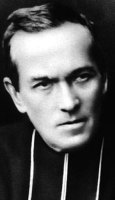
An only child in a family of workers in the silk industry, Antoine was baptized at the age of two days. He made his First Communion in 1837, and in 1840, at age 14, he considered becoming a priest – and had such a sense of happiness at the idea that he knew he had a calling to the priesthood. He began his seminary studies in 1842. While studying, he considered joining the foreign missions, but his mother threatened to disown him. "Do you think I raised you for you to be eaten by savages?", she demanded. "Savages you can find in Lyon!" He was ordained a priest in the archdiocese of Lyon, France on 25 May 1850.
Father Antoine's first assignment was to the parish of Saint-André de la Guillotière, an area of the poorest of Lyon's poor. There he dedicated himself to helping the poor, relieving some of the spirit-grinding misery in which they lived, and convincing others to do the same. He preached against greed, helped organize charity, and on Christmas Eve 1856, while meditating before a Nativity creche and contemplating the humble beginnings of Christ on Earth, he felt a call to not just work with the poor himself, but to organize a religious congregation for others with the same dedication. In January 1857 he sought the counsel of Saint John Marie Vianney on the matter, and the Cure of Ars encouraged him follow the call. Chevrier received permission to leave parish work, and with the help of the layman Camille Rambaud, he began working with and sheltering poor children, abandoned children, factory working children, and those who had already been sent to prison as children.
He joined the Franciscan Third Order in 1859, and on 10 December 1860 he purchased an old ballroom and converted it to a chapel, shelter and school for poor children. During his lifetime he personally worked with around 2,400 boys and young men. In 1866 he opened a school for the boys who felt a call to priestly or religious life, and to teach them to work with young poor people; the group became the Institute of the Priests of Prado, and the female branch, the Sisters of Prado opened soon after; the two groups were often known as the Work of Prado. The first of the Priests of Prado were ordained in Rome, Italy in 1876.
Father Antoine helped quell civil unrest in Lyon in 1871 by leading a Eucharistic procession thorugh the streets on the Feast of Corpus Christi; no one on either side of the conflict dared disrupt such an event. Chevrier wrote the books Disciple of Jesus Christ and God Sends Revolutions, which was a critique of priests who were devoted to comfort, worldly goods or careerism. Though Antoine did not live to see it, the Work received diocesan approval in 1924, was made part of the Conventual Franciscans in 1930, received a decree of papal praise for their work by Pope John XXIII on 28 October 1959, and continues its good work today in dozens of countries.
Easter Sunday, 16 April 1825 in Lyon, Rhône, France
• 2 October 1879 in Lyon, Rhône, France of natural causes
• around 10,000 people attended his funeral, many of them the people the Work of Prado had helped
• he was buried in the chapel he had built, and the street in front of it is now named for him
4 October 1986 by Pope John Paul II
• Priests of Prado
• Sisters of Prado
https://catholicsaints.info/blessed-antoine-chevrier/
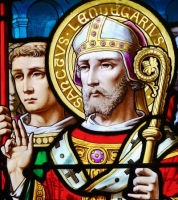
Leodegar, Leger
Son of the nobles Bobilo and Saint Sigrada. Brother of Saint Gerinus. Raised in the court of King Clotaire II. Studied in Poitiers, France under the guidance of his uncle, the bishop of Poitiers. Deacon in Poitiers, working in diocesan administration. Priest. Monk at Maxentius Abbey in 650. Abbot in 651, a position he held for six years during which he placed the abbey under the Benedictine Rule. Advisor to Queen Saint Bathild, and tutor to her children, in 656. Reforming bishop of Autun in 663. Fought Manichaeism, reformed the secular clergy, enforced discipline in religious houses, adopted the Creed of Saint Athanasius, and stressed the administration of the sacraments, especially baptism.
His work, and his support of Childeric over Ebroin for the throne, incurred the anger of many powerful entrenched rulers and groups. Exiled to Luxeuil, France in 675, he returned to Autun at the request of Theodoric III after the death of Childeric. When the city was attacked, Leodegarius arranged a surrender to avoid the Autun?s destruction. He fell into the hands of Ebroin, was blinded, his lips cut off, and his tongue pulled out. Some time later this same Ebroin accused him of instigating the murder of Childeric, had him imprisoned for two years at Fecamp monastery in Normandy, regularly tortured, crippled, and finally executed.
c.616
• murdered in 678 in the woods near Sarcing, Somme, France
• relics translated to the abbey of Saint Maxentius in 782
• relics later translated to Rennes, and then to Ebreuil, which was renamed Saint-Leger
• relics later translated to the cathedral of Autun and to Soissons, France
• man having his eyes bored out with a gimlet
• bishop holding a gimlet
• bishop holding a hook with two prongs
• blind people; against blindness, eye problems or sore eyes
• millers
• 5 cities
https://catholicsaints.info/saint-leodegarius/
Bonaventura of Palazzolo
Drawn to the religious life, Bonaventure considered joining the Augustinians, but became a Franciscan in Giaveno, Italy. Sent to the convent of Santa Maria degli Angeli in Turin, Italy where he preached against the Waldensians in the region. Assigned by Pope Urban VIII to preach in the Ottoman Turk controlled areas of Albania and Serbia from 1634 to 1643. He was known for a devotion to Mary under the title Madonna of Crea, for his simple lifestyle, his powerful preaching, and for painting images to Mary on silk which he then gave to people when he preached.
Palazzolo, Italy
2 October 1657 at the convent of the Madonna degli Angeli in Turin, Italy of natural causes
https://catholicsaints.info/blessed-bonaventura-relli/
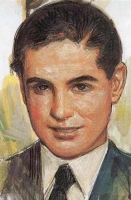
Young layman in the diocese of Córdoba, Spain. His mother died with the boy was three, his father when Bartolome was 12. Raised by his uncles and local Salesian brothers, he was recognized in his youth as a natural leader. Member of Catholic Action. Catechist. Member of the Salesian Cooperators. Social worker, noted for his mastery of Church teachings on social doctrine. Martyred in the Spanish Civil War.
25 November 1914 in Pozoblanco, Córdoba, Spain
shot on 2 October 1936 in Jaén, Spain
28 October 2007 by Pope Benedict XVI
https://catholicsaints.info/blessed-bartolome-blanco-marquez/

Son of a lawyer. Priest in the archdiocese of Sens, France. Canon of Vezelay, France. Imprisoned on a ship in the harbor of Rochefort, France and left to die during the anti–Catholic persecutions of the French Revolution for refusing to take the oath of loyalty to the government instead of the Church. One of the Martyrs of the Hulks of Rochefort.
16 November 1748 in Saint-Pierre-de-Vézelay, Yonne, France
5pm on 2 October 1794 aboard the prison ship Washington, in Rochefort, Charente-Maritime, France of tuberculosis
1 October 1995 by Pope John Paul II
https://catholicsaints.info/blessed-georges-edme-rene/
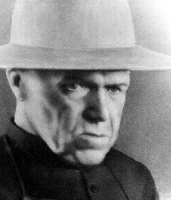
Son of a Polish freedom fighter. Jesuit priest. Teacher at Jesuit boarding schools in Tarnopol and Chyrów. In 1898 he became a missionary to lepers near Tananariwa, Madagascar. In 1902 he began construction of a leper hospital at Marana, Madagascar; he never gave up, but it took nine years to finish.
15 May 1850 in Beyzymy Wielkie, Poland (now in Ukraine)
• 2 October 1912 in Marana, Fianarantsoa, Madagascar of natural causes
• relics entombed at the Jesuit basilica in Krakow, Poland in 1993
18 August 2002 by Pope John Paul II at Krakow, Poland
https://catholicsaints.info/blessed-jan-beyzym/
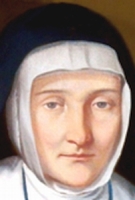
Born to the French nobility. Nun. Founder of the Sisters of the Immaculate Conception of Castres who work for the education of poor girls and children, tend the sick, and serve as missionaries.
9 March 1811 in Toulouse, Haute-Garonne, France
2 October 1859 in Castres, Tarn, France of natural causes
17 May 2015 by Pope Francis
https://catholicsaints.info/saint-emilie-de-villeneuve/
Deacon. Martyred in the persecutions of Diocletian.
Sardinia, Italy
• c.304 in Sardinia, Italy
• relics moved to Benevento, Italy
• relics moved to the basilica of Montevergine, Italy at some point, and re-discovered on 27 July 1480
https://catholicsaints.info/saint-modesto-of-sardinia/
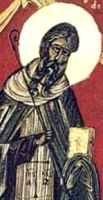
Beregiso
Priest. Confessor for Pepin of Heristal. Pepin helped him found the monastery of Saint-Hubert in the Ardennes. May have served as its abbot.
some time after 725
https://catholicsaints.info/saint-beregisus/
Garino, Garinus, Guarinus, Wannus, Warinus, Warren, Werinus
Son of Saint Sigrada; brother of Saint Leodegarius. Persecuted by Ebroin, mayor of the French palace who was at war with Saint Leodegarius. Martyr by Ebroin.
stoned to death in 676 near Arras, France
https://catholicsaints.info/saint-gerinus/
Benedictine monk in Asia Minor. Spoke out against the iconoclasts for which he was beaten, imprisoned, and exiled by Emperor Leo the Isaurian.
in Bulgaria
c.750 of natural causes
https://catholicsaints.info/saint-theophilus-of-bulgaria/
Ursicino di Coira
Benedictine monk. Abbot of Disentis, Switzerland. Reluctant bishop of Chur, Switzerland in 754. In 758 he resigned to spend the rest of his days as a prayerful hermit.
760 of natural causes
https://catholicsaints.info/saint-ursicinus-ii/
Soldier. Martyred with a number of unnamed companions in the persecutions of Diocletian.
martyred c.303 at Nicomedia
https://catholicsaints.info/saint-eleutherius-of-nicomedia/
Martyred in one of the early persecutions, date unknown.
in Antioch, Syria
https://catholicsaints.info/saint-cyril-of-antioch-2-october/
Martyred in one of the early persecutions, date unknown.
martyred in Antioch, Syria
https://catholicsaints.info/saint-secundarius/
Lomer
Bishop of Chartres, France.
c.585 of natural causes
https://catholicsaints.info/saint-leudomer/
Martyred in one of the early persecutions, date unknown.
Antioch, Syria
https://catholicsaints.info/saint-primus/
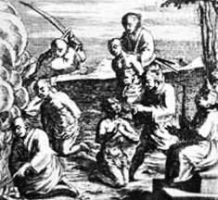
A husband, wife and two sons, who were all martyred together in the persecutions in Japan. They were
• Blessed Andreas Yakichi
• Blessed Franciscus Yakichi
• Blessed Lucia Yakichi
• Blessed Ludovicus Yakichi
1619 in Nagasaki, Japan
beheaded on 2 October 1622 in Nagasaki, Japan
7 May 1867 by Pope Pius IX
Thousands of people were murdered in the anti-Catholic persecutions of the Spanish Civil War from 1934 to 1939. I have pages on each of them, but in most cases I have only found very minimal information. They are available on the CatholicSaints.Info site through these links:
• Blessed Elías Carbonell Molla
• Blessed Enrique Sáiz-Aparicio
• Blesssed Felipe González de Heredia Barahona
• Blessed Francisco Carceller Galindo
• Blessed Isidoro Bover Oliver
• Blessed Juan Carbonell Molla
• Blessed Juan Iñiguez de Ciriano Abechuco
• Blessed Manuel Borrajo Míguez
• Blessed María Francisca Ricart Olmos
• Blessed Mateu Garrolera Masferrer
• Blessed Pedro Artolozaga Mellique
• Blessed Pedro Salcedo Puchades
• Constantine Mkheidze
• David Mkheidze
• Edmund Maclot
• Serenus of Metz
CatholicSaints.Info Portable Edition